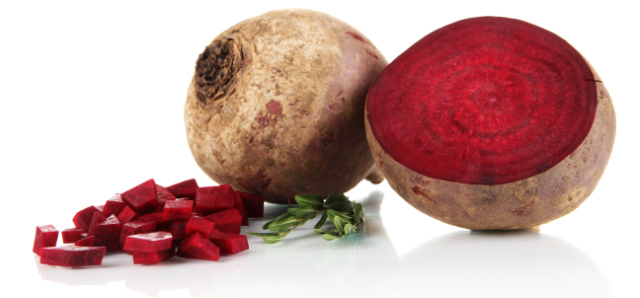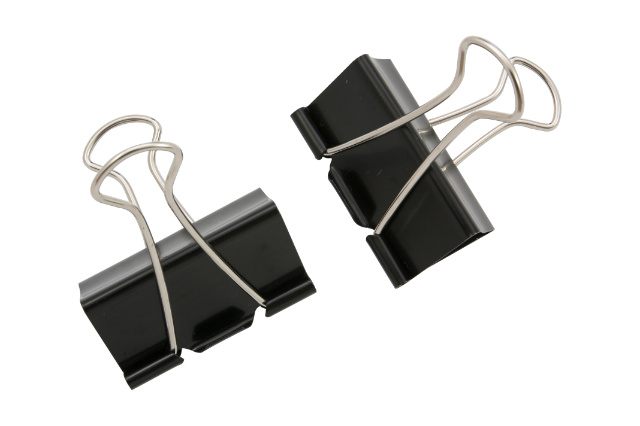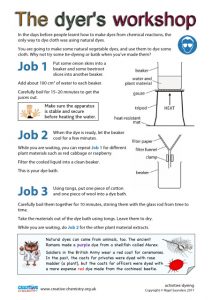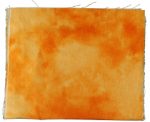Dyeing
What's it all about?
In the days before people learnt how to make dyes from chemical reactions, the only way to dye cloth was using natural dyes.
Here is an easy way to make some natural vegetable dyes, and use them to dye some cloth. You can then experiment with tie-dyeing or batik using them.
It all smells really nice, too, especially the raspberries!
Student notes
 There are two parts to the dyeing activity:
There are two parts to the dyeing activity:
The notes here describe a basic method using plant materials likely to be familiar from school science experiments. Onion skins are often used for microscopy and beetroot slices for preparing pH indicators.

Making the dyes
Put some onion skins into a beaker and some beetroot slices into another beaker. Add about 100 cm3 of water to each beaker. Carefully boil for 15–20 minutes to get the juices out.
When the dye is ready, let the beaker cool for a few minutes. Filter the cooled liquid into a clean beaker. This is your dye bath.

Teacher Guide
Activity notes
 This activity is intended as a way to use standard laboratory techniques using natural sources, rather than purified substances. It makes a good introductory activity and the lab smells nice for a change!
This activity is intended as a way to use standard laboratory techniques using natural sources, rather than purified substances. It makes a good introductory activity and the lab smells nice for a change!
Easily obtained sources include onion skins, beetroot and red cabbage. All give pleasant, though not vivid, colours. Elderberry or blackberry may give better colours. Flower petals seem mostly to make a sort of brown colour. Colour extraction works well if the plant material is cut up finely and not heated in too much water.
Sarah Cage of the Birmingham Guild of Weavers, Spinners and Dyers kindly contacted me with some excellent and detailed advice on natural dyeing: select here to see her advice.
Provide the students with squares of cloth. Wool works best but cotton such as calico also works. This should be washed first, as there is often a finish on the cloth which inhibits thorough wetting and uptake of the dyes. The cloth can be dyed simply by immersing it in a beaker of the dye solution, but you could experiment further using methods such as tie-dyeing and batik.
Tie-dyeing works best if the string is wound very tightly around the cloth, and the material is not left for more than 30 minutes in the dye bath.
Batik works especially well. A simple way is to use a paint brush to apply molten candle wax to the undyed cloth. The cloth is then dyed, dried, and the wax removed by scraping or rolling the cloth to reveal the undyed areas. These can be left undyed, or the cloth can be put into a different dye bath to obtain multi-coloured effects.
![]() Health and Safety
Health and Safety
When considering carrying out a practical activity with a class, you must check your local health and safety rules. Make an appropriate risk assessment and try the activity yourself first.
![]() Hot liquids and surfaces
Hot liquids and surfaces
Make sure hair and clothing is tied securely to avoid the naked flame from the Bunsen burner. Check that the apparatus is secure and stable before heating begins. Take care to avoid spills and splashes of hot water.
Technician notes
Per group of students:
- 3 × 250 cm3 beakers
- 1 × 100 cm3 measuring cylinder
- 1 × glass rod
- 1 × crucible tongs
- 1 × Bunsen burner, tripod, gauze mat
- 1 × filter funnel with filter paper
- 1 × stand, boss, clamp
- 1 × heat-resistant mat
In the lab:
pieces of washed cloth (wool or cotton)
string
can of candle wax
hot water bath for the candle wax (teacher to supervise)
assorted paintbrushes
drying line with bulldog clips



